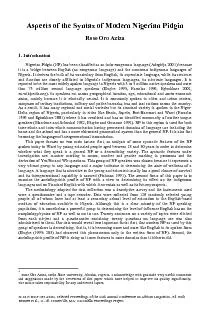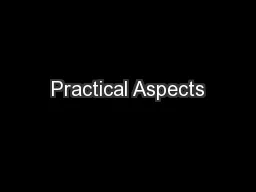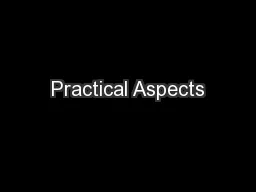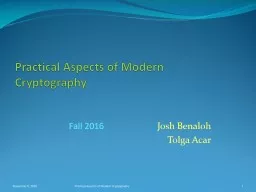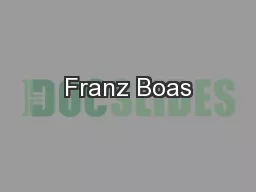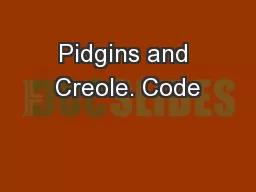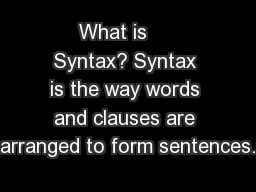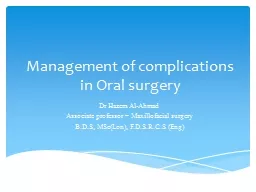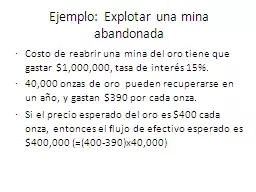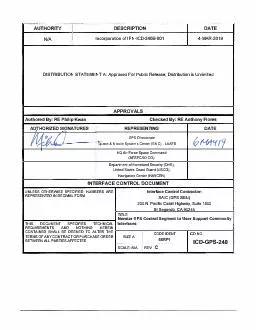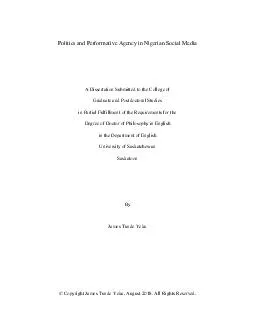PDF-Aspects of the Syntax of Modern Nigerian Pidgin Rose Oro Aziza 1. Intr
Author : faustina-dinatale | Published Date : 2017-03-04
Rose Oro Aziza Delta State University Abraka Nigeria I acknowledge with gratitude very useful commentsand suggestions made by the reviewers of this paper which
Presentation Embed Code
Download Presentation
Download Presentation The PPT/PDF document "Aspects of the Syntax of Modern Nigerian..." is the property of its rightful owner. Permission is granted to download and print the materials on this website for personal, non-commercial use only, and to display it on your personal computer provided you do not modify the materials and that you retain all copyright notices contained in the materials. By downloading content from our website, you accept the terms of this agreement.
Aspects of the Syntax of Modern Nigerian Pidgin Rose Oro Aziza 1. Intr: Transcript
Download Rules Of Document
"Aspects of the Syntax of Modern Nigerian Pidgin Rose Oro Aziza 1. Intr"The content belongs to its owner. You may download and print it for personal use, without modification, and keep all copyright notices. By downloading, you agree to these terms.
Related Documents

